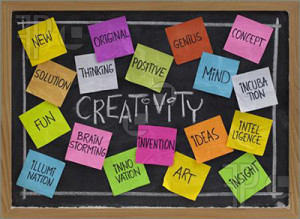How to generate a quality, engaged workforce and support a culture of growth and innovation.
To compete and succeed – now, and especially in the years ahead – it’s critical to have the right talent in the right roles and a culture that encourages the free flow of ideas and collaboration. The key to innovation is to build a secure environment in which employees feel comfortable experimenting, sharing ideas and taking smart risks.
You are faced with the challenge – and opportunity – to create the framework needed to generate a quality, engaged workforce and support a culture of growth and innovation.
These seven steps, from a recent article in Talent Management magazine, can help guide your approach to taking smart risks and driving growth.
- Make innovation everyone’s job. Human resources and other professionals must be held accountable for driving innovation within their organization. Business leaders can make this an integral part of everyone’s job function by tying performance evaluations to one’s ability to foster innovation.
- Encourage experimentation and collaboration. Measure and incentivize experimentation and collaboration among the broader workforce. This can be done through project and taskforce assignments, performance evaluations, reward plans or recognition programs that send a powerful signal about the importance the organization places on innovation.
- Organize for innovation. Promote the development of small, innovation project teams and use them in conjunction with training and development programs with the end goal of pushing innovation forward. Creating enterprise-level training programs can help employees gain a broader perspective of the role they play in driving innovation and change within the organization. Innovation skills that can be fostered include associating, questioning, observing, networking and experimenting.
- Encourage the courage to innovate. Diverse experiences, perspectives and backgrounds are critical to innovation. Be sure you are identifying, recruiting and retaining diverse talent with the skills needed to develop new ideas and foster innovation. Then, help them to appropriately challenge the status quo and take smart risks to create innovative ideas.
- Hire for a mix of discovery- and delivery-driven skill sets.Leaders at every management level and functional area should display the necessary discovery traits such as: associating, questioning, observing and experimenting. They should besupported by individuals who are delivery-focused (those who excel at analyzing, planning, detail orientation and implementing). Evaluate candidates for these skills during the interview process by conducting behavior-based interviewing and thoroughly checking references, and ensure they maintain balance throughout talent management processes.
- Think outside of your organization. Technology has completely transformed the way employees connect and interact within and outside of their organizations. Embrace the new tools and techniques available to improve idea sharing. Also, knock down traditional silos that exist when organizations only reference best practices from within their industry and choose to ignore the implications of those innovations that are influencing the world beyond.
- Work to align and then work across the organization. Develop an agile, innovative workforce by encouraging managers to adopt an “innovation intent.” Then work with employees to move between functions or geographies to gain a broader perspective of the business and build skills required to drive the organization forward. This can also help create a competitive talent advantage by attracting high-potential, quality employees who are looking for opportunities to fully explore their areas of interest.

